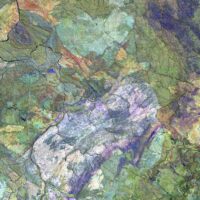With their upright posture, human beings lose a large part of their outer capacity for movement. At the same time they lose the stability that is given in the animal by its quadrupedalism and low centre of gravity.
The human centre of gravity lies above the middle of the body, approximately at the level of the first sacral vertebra. In order to be able to stand, a continuous consciousness-supported search for balance is required. That is why a human being, unlike a horse, cannot sleep standing up. Standing still is an oscillating gyration between right and left, front (ball) and back (heel). Anyone who has to stand unaided for a long time can observe this in themselves. […] The quadrupedal, leaping, hunting or fleeing instinct-driven animal surrenders its head and limbs to gravity and at the same time liberates itself through its capacity for movement. The upright human being raises their arms and head towards the light and finds the world and themselves in consciousness; on the other hand, they place their legs fully on the earth and experience the power of their earthly weight in their unstable swaying.
From Thomas McKeen, Wesen und Gestalt des Menschen. Stuttgart 1996, p. 110.
Graphic Sofia Lismont <strong>Translation</strong> Christian von Arnim












